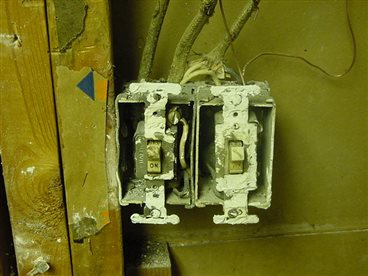Just swapped out these old sockets. Never seen anything quite like the bottom one. The earth was wrapped around a plate rather than having its own screw terminal.

I searched up the patent.
https://patents.google.com/patent/GB449631A/en
449,631. Plug couplings. ARNOLD, C. L., and DOWSETT, R. W., and MK. ELECTRIC, Ltd., Wakefield Street, Edmonton, London. Fab. 12, 1935, No. 4495. [Class 38 (i)] A socket fitting has a protector 8 that covers the supply sockets 2 and is moved in a plane by the earthing-pin 9a after it has entered its socket 3 so as to uncover the sockets 2. The projection 6a enters the socket 3 below its entry end and a guide 6b slides in holes in the socket 3 and in a plate 4a attached thereto, a spring 7 acting to keep the protector normally in the position shown. In modifications the sliding protector is furnished with a pair of limbs guided on parallel rods and interengaging with a similar pair of fixed limbs supporting the rods, springs being inserted between the limbs, or it may be guided in a channel in the base or in a cap thereon.


 only thing I can say is thank god I dont live in the UK! 220 mains~ that will kill you if you get wrapped up in it. I have been bitten by US mains (120) and Im still here!! When I lived in Asbury Park I lived in a Victorian, and did rehab on it. First problem was Knob and Tubing, then no safety ground, ouch. This pic from my house in Farmers Branch, North Dallas. The SOB used a doubled up single box and had the wires bare going from one box to another. Plus the ground wire, bare-bright copper ground never went to the send box. I don't think the switches had grounds. But the use of the two boxes instead of double gang and the stunt with the wires where VERBOTEN!.
only thing I can say is thank god I dont live in the UK! 220 mains~ that will kill you if you get wrapped up in it. I have been bitten by US mains (120) and Im still here!! When I lived in Asbury Park I lived in a Victorian, and did rehab on it. First problem was Knob and Tubing, then no safety ground, ouch. This pic from my house in Farmers Branch, North Dallas. The SOB used a doubled up single box and had the wires bare going from one box to another. Plus the ground wire, bare-bright copper ground never went to the send box. I don't think the switches had grounds. But the use of the two boxes instead of double gang and the stunt with the wires where VERBOTEN!.